Quaternary
Type of resources
Available actions
Topics
Keywords
Contact for the resource
Provided by
Years
Formats
Representation types
Update frequencies
Service types
Scale
Resolution
-
Quaternary QUEST was led by Dr Tim Lenton at UEA, with a team of 10 co-investigators at the Universities of Cambridge, Oxford, Reading, Leeds, Bristol, Southampton and at UEA. This dataset collection contains glacial and isotope model data. Over the last million years, the Earth has experienced a sequence of temperature oscillations between glacial and interglacial states, linked to variations in the Earth’s orbit around the sun. These climate oscillations were accompanied by changes in atmospheric CO2, but the fundamental reasons for this relationship are still unresolved. This project team aimed to compile a synthesis of palaeodata from sediments and ice cores, improve the synchronization of these records with each other, and use this greater understanding of the Earth’s ancient atmosphere to improve Earth system models simulating climate over very long timescales. A combined long-term data synthesis and modelling approach has helped to constrain some key mechanisms responsible for glacial-interglacial CO2 change, and Quaternary QUEST narrowed the field of ocean processes that could have caused glacial CO2 drawdown.
-
Quaternary QUEST was led by Dr Tim Lenton at UEA, with a team of 10 co-investigators at the Universities of Cambridge, Oxford, Reading, Leeds, Bristol, Southampton and at UEA. This dataset contains the Quaternary QUEST marine isotope data compilation for the last 150,000 years. The project team aimed to compile a synthesis of palaeodata from sediments and ice cores, improve the synchronization of these records with each other, and use this greater understanding of the Earth’s ancient atmosphere to improve Earth system models simulating climate over very long timescales. A combined long-term data synthesis and modelling approach has helped to constrain some key mechanisms responsible for glacial-interglacial CO2 change, and Quaternary QUEST have narrowed the field of ocean processes that could have caused glacial CO2 drawdown.
-
Quaternary QUEST was led by Dr Tim Lenton at UEA, with a team of 10 co-investigators at the Universities of Cambridge, Oxford, Reading, Leeds, Bristol, Southampton and at UEA. This dataset contains FAMOUS (FAst Met Office/UK Universities Simulator) glacial cycle model data from 150,000 years ago to present. The project team aimed to compile a synthesis of palaeodata from sediments and ice cores, improve the synchronization of these records with each other, and use this greater understanding of the Earth’s ancient atmosphere to improve Earth system models simulating climate over very long timescales. A combined long-term data synthesis and modelling approach has helped to constrain some key mechanisms responsible for glacial-interglacial CO2 change, and Quaternary QUEST have narrowed the field of ocean processes that could have caused glacial CO2 drawdown.
-
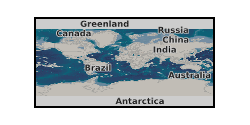
This dataset presents tephra layers, Ar-dates, age-model & stable isotope data from the >250 kyr-long Lake Chala sediment record, Kenya/Tanzania. The file is split into six tables: (1) metadata on the 30 tephra layers (29 visible tephra layers, one cryptotephra) studied to date, including sample and core codes, summary characteristics and ages; (2) summary of Ar-dating results on ten of the Lake Chala tephra layers; (3) the DCH_TephraAge Bayesian age model, which combines tephra, 210Pb and 14C age-estimates for the length of the core; (4) Raw single-grain WDS-EPMA results for all tephra layers studied in the DeepCHALLA sediment record; and (5) secondary standard data; (6) unpublished Diatom ?18O (‰ VSMOW), Bulk organic ?13C (‰), %C and Diatom d13C (‰) measurements for the full length of the core (given on a composite depth scale). These chronological data (Tables 1-5) are central to the reconstruction of palaeoclimate from a multi-proxy analyses of the Lake Chala sediment sequence and are included in publications by Baxter et al. (2023) and Martin-Jones et al. (2020, in review), for which references are given in the appropriate files. Stable isotope data (produced by Barker and Leng) remains unpublished at the time of upload. The data was generated by Catherine Martin-Jones, Christine Lane, Maarten Blaauw, Darren Mark, Melanie Leng and Phil Barker between 2017-2022. Much of the tephra data is published and references are provided.
-
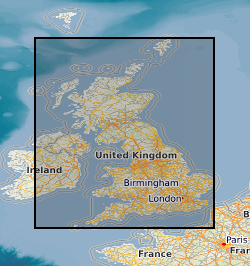
A superficial thickness model covering England Scotland and Wales. The model is derived by direct modelling (natural neighbour interpolation) of BGS Borehole records and BGS Digmap. For the purposes of modelling, superficial deposits include sediments deposited during the Quaternary, subsequent Holocene rivers and coastal systems and also modern anthropogenic material. i.e. deposits that are less than 2.6 million years old. Grids are overprinted with a minimum value so that areas where no bore data is present, but superficial deposits are known to occur are given a minimum 1.5m thickness. The superficial thickness model has been created as baseline datasets for the BGS Information Products programme. The model provides only a simple, mathematical interpretation of reality with some phantom points that improve the model mainly in valley areas where lack of data was given different results as those expected by a geological interpretation of the area. The complexity of Superficial deposits in Great Britain is such that it is only possible to model indicative values of thickness and elevation. The models should never be used as a substitute for thorough site investigation.
-
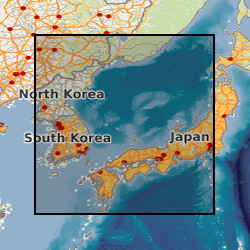
This award was made as a sailing participant of IODP Expedition 346, an international ocean drilling programme that NERC subscribe to. As such there was a lot of data generated that is owned and kept by IODP and which is freely available at: web.iodp.tamu.edu/UWQ/. Published Paper: Integrated Ocean Drilling Program Expedition 346 Scientific Prospectus - Asian Monsoon Onset and evolution of millennial-scale variability of Asian monsoon and its possible relation with Himalaya and Tibetan Plateau uplift. doi:10.2204/iodp.sp.346.2013
-
Determining an accurate timescale for the Vostok ice core using ice-sheet measurements and modelling

The nature of ice-sheet flow between Ridge B and the Vostok sub-ice lake will be determined from a series of measurements and numerical models. Datasets available foe measurements include airborne radar(for ice thickness, internal ice layering, crystal orientation fabric development, and sub-ice conditions), ERS-1 altimetry (for the ice-surface elevation) and interferometric SAR (for the ice-surface velocity). The measurements will form boundary conditions for state-of-the-art models of ice flow. Model results will establish the true nature of ice flow in this region of Antartica. Results will be fundamental to (1) the depth-chronology of the Vostok ice core (2) the examination of the ice-water interaction above the large Vostok subglacial lake and (3) developing traditional models of ice flow in central regions of ice sheets that currently do not replicate the true glaciology.
-

This Web service provides layers which are part of the BGS Superficial Deposits Thickness Model (SDTM) series of datasets. It currently includes two layers from the STDM 1 km hex grid dataset, which is available under the Open Government Licence. These two layers are symbolised on the mean and maximum values of the BSTM thickness model within the area of each hexagon. In these two layers, note that the data include a generic value of 1 m thickness for any area where superficial material is present, but is unproven by boreholes (shown on the map by a grey colour).
-
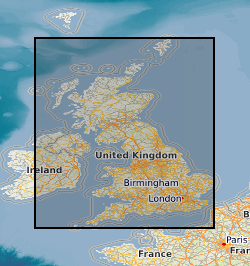
A series of tiled models of superficial thickness covering the UK. The models are derived by direct modelling (natural neighbour interpolation) of BGS borehole records and BGS DiGMapGB-50. For the purposes of modelling, superficial deposits include sediments deposited during the Quaternary, subsequent Holocene rivers and coastal systems and also modern anthropogenic material, i.e. deposits that are less than 2.6 million years old. The 50 m x 50 m grids are overprinted with a minimum value so that areas where no bore data is present, but drift is known to occur, are given a minimum 1.5 m thickness. The superficial thickness models have been created as baseline datasets for the BGS Geohazard programme. They represent the first attempt by BGS to create nationwide models of such data and the models provide only a simple, mathematical interpretation of reality. The complexity of superficial deposits in Great Britain is such that it is only possible to model indicative values of thickness and elevation. The models should never be used as a substitute for thorough site investigation. The SDTM comprises three individual datasets; two datasets describe thickness variation and a third dataset details 'proximity' of the modelled data to the original source information. 1. The ASTM (Advanced Superficial Thickness Model) is a model of thickness variation indirectly derived from archive borehole records and map data. 2. The BSTM (Basic Superficial Thickness Model) is a model of thickness variation directly derived from archive borehole records. 3. The DBUFF (distance buffer) dataset is a calculation of spatial distance to the location of any data point used in the model. This provides the user with an indication as to how far the computer has had to interpolate and extrapolate the data from a measured observation point. For more information, refer to the user guide: The National Superficial Deposit Thickness Model (version 5). BGS Open Report OR/09/49. https://webapps.bgs.ac.uk/data/publications/publication.html?id=19867430
-
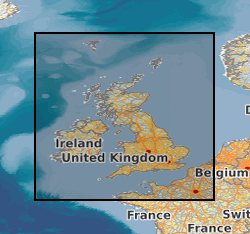
This layer of the Map based index (GeoIndex) shows the location of available UTM (Universal Transverse Mercator) series 1:250000 geological maps. These maps display Bedrock, Quaternary (Superficial deposits) geology of the offshore areas and Seabed Sediments of the UK landmass and offshore regions. The different versions are normally published as separate maps for land areas, but these may be combined on a single map for offshore areas. Maps are normally available in flat and folded format. The UTM Series (Universal Transverse Mercator projection) maps cover an area of 1deg. latitude by 2deg. longitude.
 NERC Data Catalogue Service
NERC Data Catalogue Service